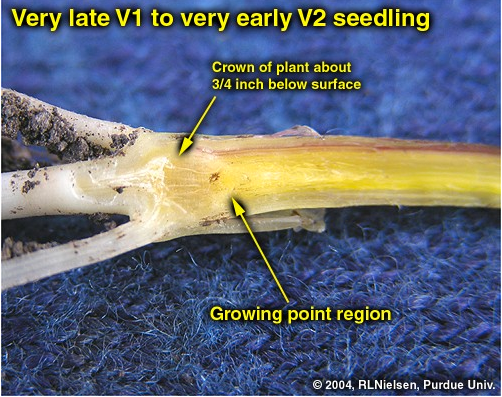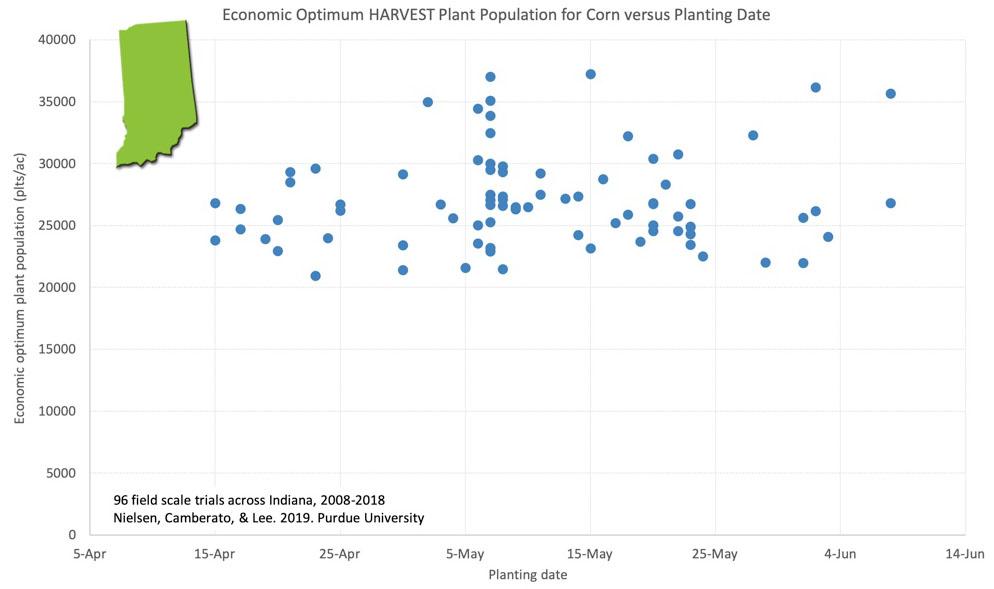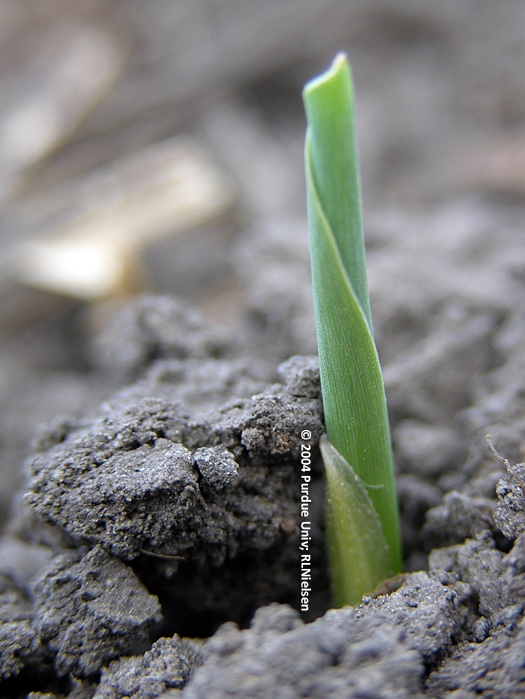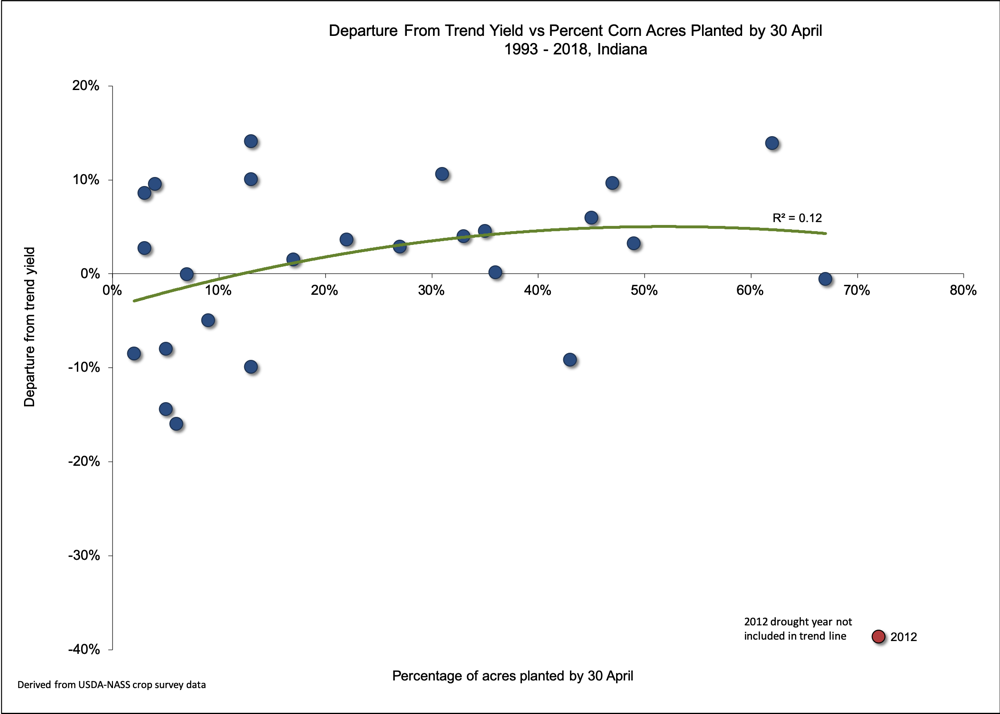
Recovery from early season damage to corn is strongly dependent on the health of the main (apical) growing point region following the damage.


Recovery from early season damage to corn is strongly dependent on the health of the main (apical) growing point region following the damage.

The risk of damaging spring frost events is one of the downsides to planting corn earlier than normal, but is one growers often accept when early spring field conditions are otherwise suitable for planting. However, the threat of low temperatures in late May or early June also raises the specter of frost or low temperature damage to young corn plants, regardless of planting date. Early morning temperatures in the 30so(F) coupled with clear calm conditions overnight certainly are favorable for frost formation on exposed surfaces, including leaves of young corn plants. In other words, temperatures do not need to drop to 32oF or cooler in order for frost to form. When significant frost develops on young corn plants, it is tempting to jump to the logical conclusion that significant plant mortality will soon follow. However, frost by itself is not a guaranteed “kiss of death” for young corn plants. What[Read More…]
Soils in Indiana have been too wet for field work almost since last fall. What I mean by “too wet” is so wet that the soils would not even support the weight of the field equipment without creating ruts or the equipment literally getting stuck.

Delayed planting seasons create a lot of frustrations for everyone involved with planting crops. One of the agronomic questions that comes up when planting is seriously delayed is whether farmers should consider switching from their normal full-season maturity hybrids to shorter-maturity hybrids. The question is based, of course, on the perceived risk of the crop not reaching physiological maturity before a killing fall freeze and the yield losses that could result. A related, and economic, concern with delayed planting of normal full-maturity hybrids is the risk of high grain moisture contents at harvest and the resulting costs incurred by artificial drying of the grain or price discounts by buyers. Bottom Line Delayed planting certainly reduces the growing season for corn, both in terms of calendar days but more importantly in terms of available GDDs for the plants to safely mature before a fall frost or killing freeze. The good news[Read More…]

The prospect of delayed planting of corn leads corn growers to consider whether changes in seeding rate should be made in response to late planting. The short answer is that optimum plant populations probably remain the same regardless of planting date.

Successful stand establishment of a corn crop relies on many factors, including the successful emergence of the seedlings in the first place. Seedling emergence occurs as a result of elongation of the mesocotyl that elevates the coleoptile or “spike” toward the soil surface.

Conventional wisdom says that the prime planting “window” to maximize corn yields in much of Indiana opens about April 20 and closes about May 10. This “window” typically opens about one week later across the northern tier of Indiana counties (later warmup) and about one week earlier across the southern tier of Indiana counties (earlier warmup).
This report summarizes corn yield response to fertilizer nitrogen (N) rate in field scale trials conducted around the state of Indiana since 2006. These results are applicable to N management programs that use efficient methods and timings of N fertilizer application.
Results from 97 field scale trials around Indiana since 2008 suggest that maximum yield response to plant populations for 30-inch row corn grown under minimal to moderate stress conditions occurs at about 32,150 PLANTS per acre (ppa), equal to seeding rates of about 33,840 SEEDS per acre (spa).

Sulfur (S) deficiency is becoming more common in Indiana crops because S emissions from coal-fired power plants have decreased over the past few decades and, thus, so has atmospheric S deposition.
© 2024 Purdue University | An equal access/equal opportunity university | Copyright Complaints | Maintained by Pest&Crop newsletter
If you have trouble accessing this page because of a disability, please contact Pest&Crop newsletter at luck@purdue.edu.